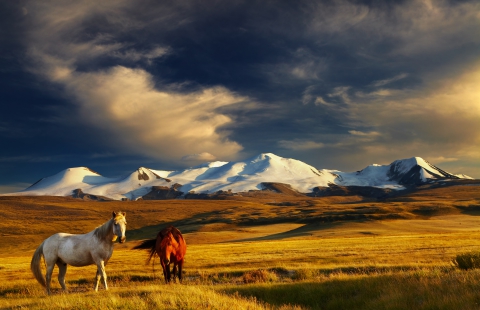The History of Rhodiola Rosea
Posted by Ameriden International on 21st Apr 2017

Have you ever heard of rhodiola rosea? Also known as the “golden root,” rhodiola rosea is a root that grows in the more frigid climates of northern Asia, East Europe, and the Arctic. The Vikings and Sherpa people of ancient times turned to rhodiola to enhance their strength. Over the past 70 years, rhodiola has been a very popular natural health supplement in Russia. However, many people in the United States are unaware that this root even exists. Today, we would like to dive deeper into the history of rhodiola rosea:
Ancient Greece
Ancient Greek physician Dioscorides is believed to have experimented with the medicinal uses for rhodiola rosea in 77 AD, which he called rodia riza. His writings are located in his text, De Materia Medica. Rhodiola rosea grows in frigid climates, so you might be wondering how it ended up in Greece. During the Bronze Age in Greece (13th century BCE), the Greeks crossed the Aegean Sea for trading expeditions. They made their way to the land of Colchis, which is now the Republic of Georgia, which had the perfect climate for growing the herb.
Vikings And Rhodiola Rosea
The Vikings ingested rhodiola rosea in the hopes of boosting their endurance and strength. They needed to keep their energy levels high so they could pillage and raid to their best abilities.
Ancient China
In ancient China, emperors sent their constituents on expeditions to Siberia in search of “the golden root.” People brewed a tea from this herb in order to treat colds and the flu.
Siberian Use
In Siberia, many people believe that drinking rhodiola rosea tea will help people live long lives. Traditionally, newlyweds are given the herb in hopes that it will boost their fertility levels as well as encourage the birth of healthy babies. In fact, some Siberian families kept the location of their rhodiola rosea crops a secret. Never disclosing the secrets to harvesting a good crop, they would trade the herb for honey, wine, and fruit.
The Name
The name “rhodiola rosea” was coined by Swedish botanist Carl Linnaeus in 1725. Linnaeus would prescribe this herb as a remedy for conditions such as headaches, hysteria, and even hernias.
The Family
Rhodiola rosea is a part of the sedum family (Crassulaceae), and is grown in cooler regions in Europe, Asia, and North America. This plant can be found in the mountains of eastern Europe, Switzerland, Austria, Italy, and Bulgaria. In fact, this herb even grows in the mountains of western China and Tibet. In North America, rhodiola rosea can grow in Alaska as well as in the Rocky Mountains in Colorado, Utah, and Nevada. Believe it or not, this herb is even known to grow in Minnesota, New York, Pennsylvania, Vermont, and Maine.
If you are interested in rhodiola rosea, check out our rhodiola rosea supplement, Rosavin®. This is a DNA- tested health supplement that is water-only extracted and freeze-dried. Our rhodiola supplements are harvested after a minimum of five years of growth. Try Rosavin and our other health supplements online today.

